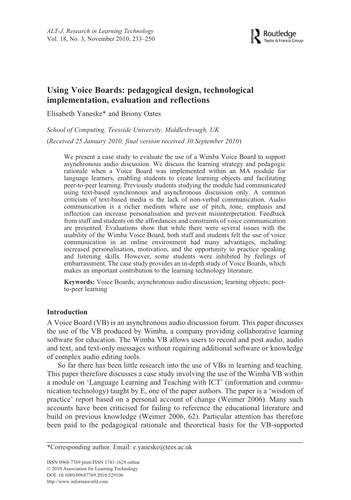
We present a case study to evaluate the use of a Wimba Voice Board to support asynchronous audio discussion. We discuss the learning strategy and pedagogic rationale when a Voice Board was implemented within an MA module for language learners, enabling students to create learning objects and facilitating peer-to-peer learning. Previously students studying the module had communicated using text-based synchronous and asynchronous discussion only. A common criticism of text-based media is the lack of non-verbal communication.
Something went wrong, please try again later.
This resource hasn't been reviewed yet
To ensure quality for our reviews, only customers who have downloaded this resource can review it
Report this resourceto let us know if it violates our terms and conditions.
Our customer service team will review your report and will be in touch.
£0.00
